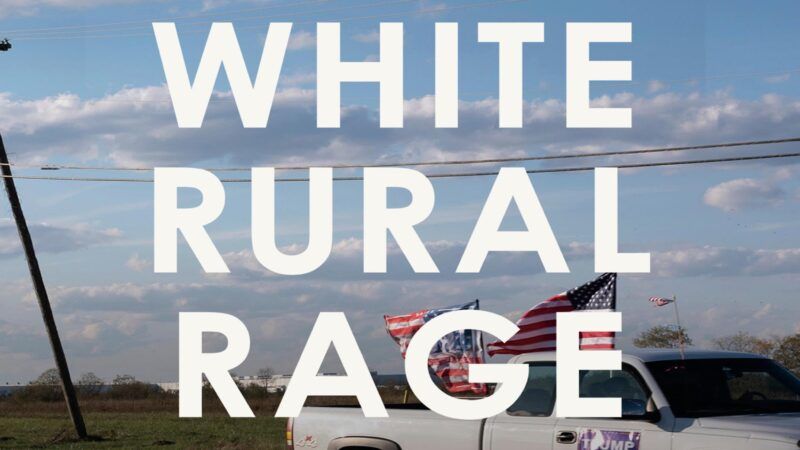The Truth About 'Rural Rage'
Our research was cited in a new book on “white rural rage.” But the authors got the research wrong.

White Rural Rage: The Threat to American Democracy, by Tom Schaller and Paul Waldman, Penguin Random House, 320 pages, $32
A new book, White Rural Rage, paints white rural Americans, a small and shrinking minority of the country, as the greatest threat to American democracy. The authors, political scientist Tom Schaller and journalist Paul Waldman, try to buttress this argument by citing scholarly publications. We are two of the scholars whose work they cite, and we cry foul.
The overarching argument of White Rural Rage is that ruralness can be equated with racism, xenophobia, conspiracism, and anti-democratic beliefs. But rigorous scholarship shows that rural identity is not reducible to these beliefs, which are vastly more numerous outside rural communities than within them. To get to a conclusion so at odds with the scholarly consensus, Schaller and Waldman repeatedly commit academic malpractice.
Consider the "ecological fallacy" of political geography, on which some of the most salacious arguments in White Rural Rage depend. Most people know that you cannot argue something about individuals because of how groups to which that individual belongs behave. The most famous example of this poor reasoning is thinking that because the richest states of Massachusetts and California vote Democratic, rich people everywhere vote Democrat. The opposite is true.
But Schaller and Waldman depend on this well-known fallacy to support their most provocative claims. Because authoritarianism predicted support for Donald Trump in the 2016 Republican primaries and because rural residents tend to support Trump, they say rural residents are the most likely to be authoritarian. Because white evangelicals are most likely to support Christian nationalist beliefs and because 43 percent of rural residents identify as evangelical, they say the hotbed of Christian nationalism is in rural communities. Perhaps the most egregious form of guilt-by-association comes in a weakly sourced analysis of who supports "constitutional sheriffs": Not a single study of rural attitudes is cited in that section of the book.

It gets worse. In several instances, the authors misinterpret what the academic research they cite says. For example, they use a report by the Chicago Project on Security and Threats to argue that "rural Americans are overrepresented among those with insurrectionist tendencies." But the actual report concludes exactly the opposite: "The more rural the county, the lower the county rate of sending insurrectionists" to the January 6 Capitol riot. Moreover, when a peer-reviewed article in the journal Political Behavior compared rural and non-rural beliefs on whether politically motivated violence is a valid means for pursuing political change, it revealed that rural Americans are actually less supportive of political violence.
Another example comes when the authors rely on a report from the Public Religion Research Institute on QAnon conspiracy theories. The report has its own fundamental problems, including a suspect measure of QAnon support in the first instance, but what Schaller and Waldman do with those data is more egregious yet. First, the authors do not even interpret the model output correctly, writing that the results mean that "QAnon believers are one and a half times more likely to live in rural than urban areas." But the report presents odds ratios, which means that living in a rural area increases the likelihood by just 30 percent. Inaccurate interpretation aside, if they were more statistically literate they would see this is probably not a model worth citing. On the exact same page, the model output suggests that, compared to white Americans, being black increases the likelihood of believing in QAnon by 90 percent! Weird results like this are red flags that should make us ask questions, not confirm our priors.
Beyond issues of sparse and selective citing, the book misrepresents the findings of multiple scholars who have built careers conducting research on rural politics and identity.
The authors characterize the academic concept of rural resentment (the less headline-grabbing academic term that Schaller and Waldman have apparently rebranded as "rage") as necessarily including racial resentment as a constitutive component. But academic work on rural identity has overwhelmingly shown that these two are distinguishable. They are different concepts.
Indeed, as we have painstakingly demonstrated in our own work, rural resentment involves perceptions of geographic inequity. Many rural people see inequity in who politicians pay attention to, which communities get resources and which don't, and in how different types of communities are portrayed in the media. This is not racial prejudice by another name.
Schaller and Waldman favorably cite our research showing that there is a modest correlation between rural resentment and racial resentment, a commonly used attitudinal measure of negative racial stereotyping. What they fail to note is the only statistically and intellectually sound conclusion that could be drawn from our data: While this slight correlation exists, rural resentment is an attitude distinct from racial prejudice.
In another peer-reviewed publication that Schaller and Waldman erroneously cite, we found that rural resentment strongly explains rural preferences and behavior even when one controls, statistically, for a litany of factors, including racial resentment, that Schaller, Waldman, and others conflate with it. The value of our academic work has been to elucidate the place-based dynamics of American politics—to say that there is much more than rage and rebellion in the heartland. It's distressing to see a book citing our work to support misleading arguments.
At a time when trust in experts is on the decline throughout America, flawed analysis like the ideas in White Rural Rage may be a greater threat to American democracy than anything coming from the countryside. It is popular these days to say "follow the science." Well, the science shows that there is no mystery to rural rage: Years of neglect, abandonment, and scorn have driven rural America to view "experts" like Schaller and Waldman as the enemy.
Show Comments (225)